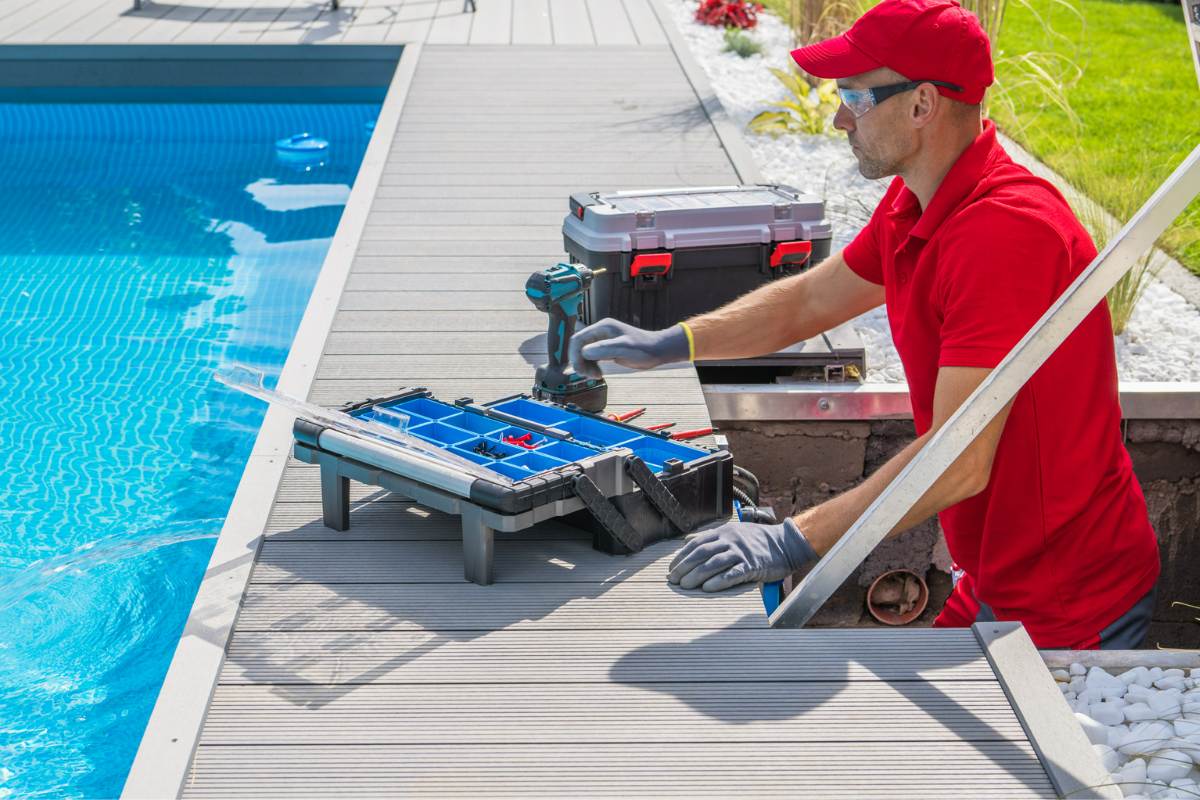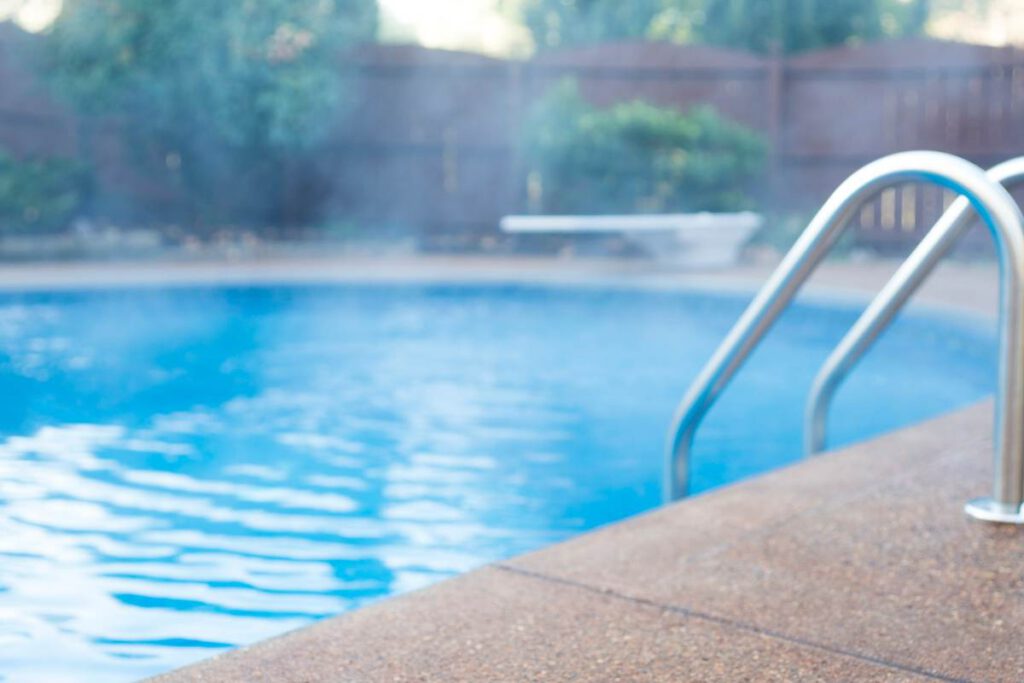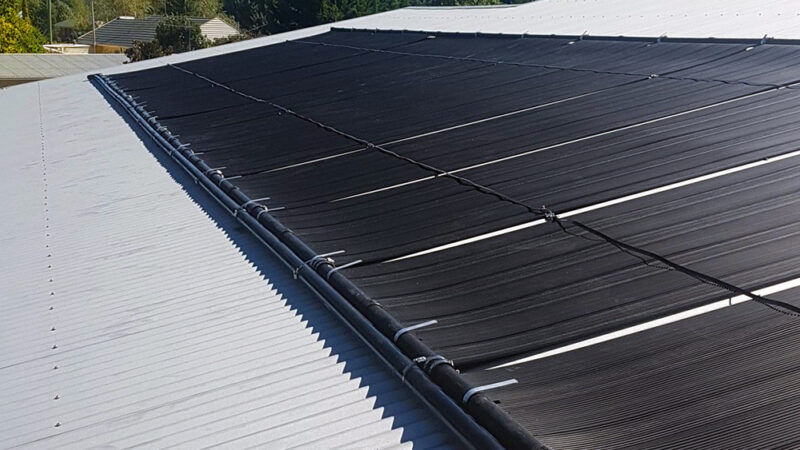How to Control a Solar Heating System for a Pool

There are two primary ways to control or regulate the solar heating system for a pool – manual and automatic. Both ways have their benefits and downsides.
Solar technology has come a long way indeed. Since the quest for utilizing renewable energy began, a lot of innovations have taken place, and one of them is the solar pool heating system. Most homeowners that own a pool on their property, especially those in temperate or cold regions, can attest to the fact that on many occasions, their pool water becomes very chilly to swim or relax in. During the winter season, the pool even freezes.
This is an issue the pool heating system solves. In this context, we’re not referring to the standard pool heater because that means higher electricity bills. This makes the solar pool heating system ideal because it doesn’t draw power from the grid and adds no extra cost to what you’re already paying.
However, our main focus is on regulating the temperature of the solar pool heater to make the water temperature suitable for swimming and relaxation at all times.
Methods of Controlling a Solar Pool Heating System
As we mentioned, two ways exist to control the pool water temperature. The solar pool heating is regulated via a control valve which can be either manual or automatic.
Manual Control
Manual regulation has to do with turning the control valve yourself. This is done during peak sunlight hours because that’s when the solar panels will function optimally in powering the solar system. The solar pool heating system will enable the pool water to flow to its solar collectors and return to the pool as solar-heated water.
Then, from dusk, you’ll have to turn the manual control valve again to stop the water flow to the solar collectors because they will be cool during this time and will draw heat from the water. Once it’s dusk, the solar panels can’t power the pool equipment and solar collectors. Instead of getting hot water flowing back to the pool, the water will become cooler.
Automatic Control
This is a more convenient means of regulating the pool temperature because you don’t have to do anything after installing the solar pool heating equipment. The automatic control valve does the job itself without assistance. It comprises a control system, a motorized actuator, a 3-way valve, and a pair of temperature sensors.
The control system is a box that contains the differential temperature controller; it functions according to the data or readings it receives from the temperature sensors. The first temperature sensor is a roof sensor on the rooftop where it will either get sun or be in the shade in tandem with the solar collectors. It involves running the sensor wire to the spot where it can get the same amount of sunlight the collectors receive. The sensor is then on the roof of the building and connected to the wire.
The second sensor is the water temperature sensor in the pool plumbing. This is inserted by drilling a hole in the pipe that connects to the pool filter before reaching the valve. An O-ring is then used to prevent leakage from the pipe, and a hose clamp secures the installation.
A motor powers the automatic control valve. The motorized actuator turns on or turns off the valve. As the system monitors the temperature sensors, it regulates the valve. The system has a switch and dial. The former has three instructions: turn off, turn on, and run a test. The latter, on the other hand, enables you to configure the pool temperature.
Suppose the pool temperature is below what you configured on the dial. In that case, the control system will utilize the roof temperature sensor to determine if sending water to the solar collectors will result in heating water. If the weather condition is unfavorable (cloudy or rainy day), the roof sensor will be cool, and the control system will be dormant.
When the weather is favorable (a sunny day), the roof temperature sensor will be hot, and the control system will turn on the control valve to let the water flow to the collectors.
Factors for Installing a Solar Pool Heater
Due to the multiple factors influencing solar installation, there’s no one-for-all installation procedure. However, contacting a professional installer will be the best move considering they know what to consider and the best way to install the solar controllers as well as the roof temperature sensor and the water temperature sensor. These factors include;
Configuration of the Heating Plate
How the heating plates are configured will determine if the flow rate to the heater is consistent. In cases where the pool water flow rate is beyond the maximum allowance of the collectors, we recommend using the split-feed or double-row configuration.
The Plumbing
We recommend using PVC or CPVC pipe on the return side of the collectors because of its resistance to high temperatures. We also recommend properly sizing the pipes according to the water pressure gauge. For instance, use 38mm pipes for 30gpm, 50mm pipes for 31-50gpm, and 64mm pipes for 51-70gpm.
Orientation
It’s ideal to be aware of your geographical location. If your area of residence is in the Northern Hemisphere, the best orientation for installing the solar controller is southwards. Alternatively, you can also settle for West-facing and East-facing directions. The North-facing direction is the worst orientation for installing solar pool heating equipment. On the flip side, if you reside in the Southern Hemisphere, the best orientation is a North-facing direction, and the worst is towards the South.
Pump horsepower
You should consider the capacity of the pool pump. For most solar controllers, the ideal capacity is 1 HP. However, in cases where the roof is very high, the pipe is very lengthy, or there are numerous heating plates, you’ll need a pool pump with higher horsepower. Otherwise, the amount of water that will flow to the collectors will be insufficient.
How Does the Solar Pool Heater Work?
To know how the entire system works, you must appreciate the individual components and their functions. It all builds up to how the entire system functions. The solar pool heating equipment comprises;
- Heating plates: These are metal tubes have a black coating that traps energy from the sun like a solar panel. Water flows to the base of the collectors from the pump, rises up, and comes out at the top of the heating plates.
- Filter: The filter pump ensures the system stays clean by extracting debris and other forms of impurities from the water.
- The solar booster pump: Typically, a pump is powered by conventional electricity. However, in this context, it’s powered by solar energy. It enables water movement to the heating plates and back to the pool.
- The control system: This solar control is the engine of the equipment. It oversees the water temperature in the pool and what comes out of the collectors. It ensures the heated water is circulated if the water in the collectors is warmer than what’s in the pool.
- Safety features: Every pool heating equipment has specific features that prevent overheating or serious damage. These include automatic shut-off valves, pressure relief, and temperature valves.
- Valves: The valve can serve as a bypass valve when heating is unnecessary or reduce the amount of water going to the collectors to lower the pressure. The check valve, which is between the exit of the filter and the entrance of the heater, prevents water from flowing back to the filter from the heater. It also ensures that cool water doesn’t gain access to the pipes meant for hot water.
Types of Solar Heating Plates
There are three types of heating plates.
Glazed Heating Plates
For these heating plates, the rising tubes are coated with an acrylic glaze, which makes it difficult for the breeze to take away the heat it traps. It’s more suited for colder regions because it’s the most efficient heating plate with the longest warranty. However, it’s also the most expensive.
Separated Tube Heating Plates
This heating plate, as the name suggests, has separated rising tubes. This design enables the wind to take some of the heat it traps away, which makes it less efficient than glazed heating plates. However, this heating plate is ideal for very windy conditions because it has space through which the wind can pass through. It’s less prone to freezing damage and more suited for a low-wind environment.
Solid-Body Heating Plates
This heating plate has rising tubes that are joined together. It’s best for windy areas because it’s less prone to heat reduction from the wind. However, it’s more prone to freezing damage.
How to Choose the Right Solar Pool Heater for Your Needs?

Selecting the right heating equipment for your pool isn’t hard at all. You just need to know what to look out for. They include;
- Type of heating plates: Choose the best heating plates for your pool based on the condition of the environment and how much it will cost.
- Direct heating: The amount of sunlight that reaches the pool determines the useful surface area of your heating plates. It should determine how many heating plates you’ll need.
- Size of the total heating plates’ surface area: To effectively heat a pool, you need multiple heating plates. They should be at least 50% of your pool’s surface area. 50% is ideal during the summer, but go for 100% when it’s winter.
- Type of pump: Variable speed pumps are ideal because they help with energy savings, especially when powered with solar.

